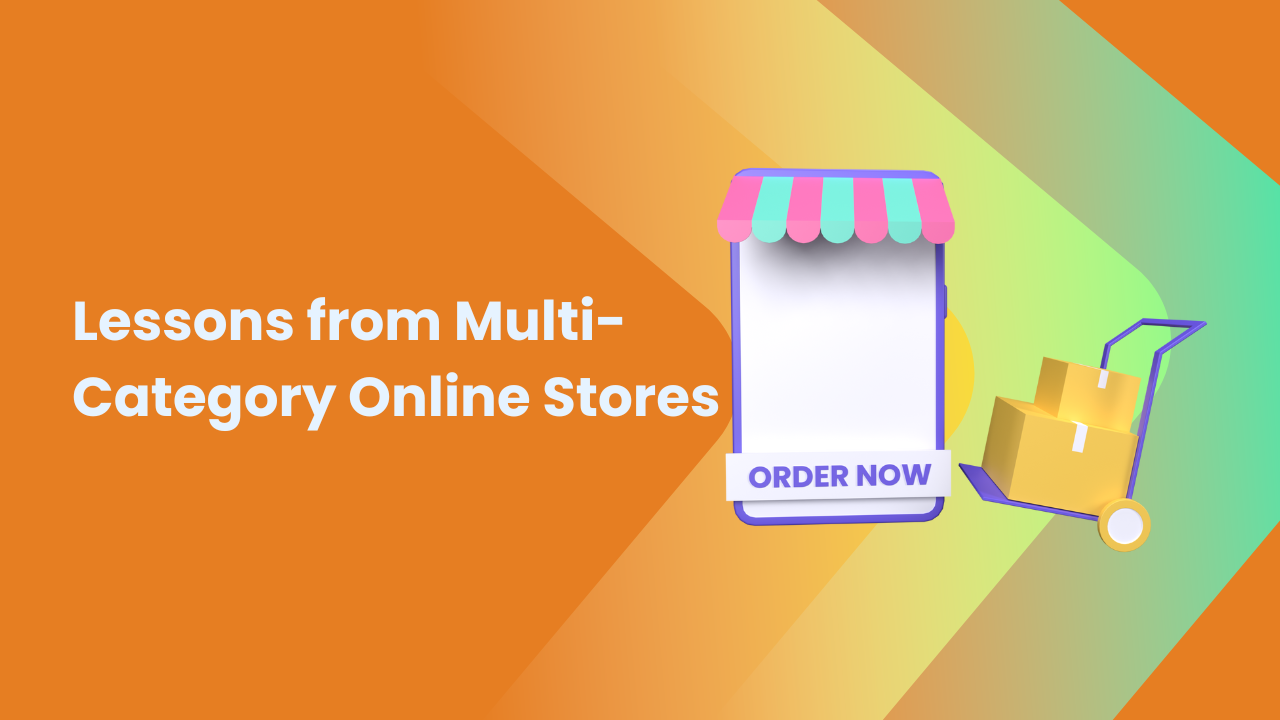Share this Article
In today’s rapidly growing e-commerce market in Nepal, sellers are looking for innovative ways to boost their visibility, increase sales, and expand their customer base. One of the most effective strategies for achieving these goals is multi-channel selling. Multi-channel selling involves selling your products on multiple platforms or channels, both online and offline, to engage a broader audience, diversify your income sources, and mitigate the risks associated with relying on a single sales channel.
For Nepali e-commerce sellers, adopting a multi-channel approach offers numerous advantages, including access to new markets, better brand recognition, and more sales opportunities. This strategy involves utilizing various platforms like online marketplaces, social media, physical retail stores, and your own website, to maximize exposure and sales potential. By exploring the benefits and best practices of multi-channel selling, Nepali sellers can unlock new opportunities for growth and establish a strong presence in the competitive digital marketplace.
In this article, we will explore how Nepali e-commerce sellers can benefit from a multi-channel selling approach, how to implement it successfully, and why this strategy can be a game-changer for driving growth in the Nepali e-commerce sector.
1. Defining Multi-Channel Selling: What Does It Mean for Nepali E-commerce Sellers?
At its core, multi-channel selling is about listing and selling your products on several platforms or sales channels, both digital and physical. In the context of Nepali e-commerce, this could mean offering products on popular online marketplaces such as Daraz, SastoDeal, HamroBazar, and even expanding into social media platforms like Instagram or Facebook. Additionally, sellers can run their own e-commerce websites or engage in physical retail by opening stores in key locations.
The importance of multi-channel selling stems from the fact that today’s consumers have different preferences when it comes to how they shop. Some may prefer the convenience of online marketplaces, while others may enjoy browsing on social media or visiting physical stores. Therefore, as a seller, your goal is to be where your customers are, making your products accessible to a broader and more diverse audience.
2. Why Multi-Channel Selling Is Beneficial for Nepali E-commerce Sellers
Multi-channel selling offers a range of advantages that can be pivotal for the growth of Nepali e-commerce businesses. By adopting a multi-channel strategy, sellers can overcome limitations associated with relying on a single platform, increase their exposure, and capture a larger share of the market.
Here are some key benefits of multi-channel selling:
Broader Audience Reach and Enhanced Visibility
One of the most significant advantages of multi-channel selling is the increased reach. Different consumers tend to shop on different platforms, and being present on multiple channels allows you to tap into various segments of the market. By utilizing multiple channels, sellers can gain access to a wider audience, whether they are local customers from Kathmandu, international buyers, or younger audiences who prefer social media shopping.
- Diverse Consumer Demographics: Platforms such as Daraz may attract a different audience compared to social media channels like Instagram, where trends, fashion, and lifestyle products perform well. Selling on multiple platforms ensures you reach diverse groups of consumers who have varying preferences and shopping habits.
- Increased Brand Exposure: Every new channel you sell on is another opportunity for potential customers to find and engage with your brand. This increases your online visibility and makes your products more accessible.
Diversified Revenue Streams for Stability
By relying on just one platform or sales channel, you put yourself at risk if that platform faces technical difficulties, changes its policies, or experiences a drop in traffic. Multi-channel selling reduces this risk by diversifying your revenue streams. With multiple channels, sellers are not reliant on a single source of income. In the event that one channel underperforms or experiences downtime, others can help maintain sales momentum.
- Reduced Dependency on One Platform: If one marketplace experiences a problem or a shift in customer behavior, having other platforms to fall back on provides financial security and stability.
- Additional Income Sources: The more channels you use, the more opportunities you have to generate sales. This could include sales from your website, social media, and even physical retail locations.
- Seasonal Variations: In certain seasons, one platform may perform better than others. Having multiple channels ensures that you can maintain revenue consistency throughout the year.
Stronger Customer Engagement and Trust
Engaging with customers across multiple platforms gives sellers the chance to build a stronger relationship with their audience. Social media channels, for instance, allow you to interact directly with customers through comments, direct messages, and live sessions. This constant engagement not only builds trust but also keeps your customers coming back for more.
- Direct Communication with Customers: Platforms like Facebook and Instagram offer an interactive way to communicate with your audience. Responding to queries, sharing updates, and addressing concerns in real-time can enhance the overall customer experience and increase brand loyalty.
- Building Brand Loyalty: Engaging with customers on multiple channels helps to build brand loyalty. Customers are more likely to return to a brand that offers consistent communication, personalized experiences, and great customer service.
Access to Valuable Customer Insights
Selling across multiple platforms means that you have access to a wealth of data on customer behavior and preferences. By analyzing customer data, sellers can gain insights into which platforms are performing best, which products are most popular, and which strategies are most effective in driving sales.
- Consumer Behavior Tracking: Through data analysis, you can identify where your customers are coming from, what types of products they prefer, and what time of day they tend to make purchases. This information can help you tailor your offerings to meet customer needs more effectively.
- Improved Marketing Strategies: With data from multiple channels, you can refine your marketing strategies to target specific customer segments more accurately and increase sales conversions.
3. How to Successfully Implement Multi-Channel Selling in Nepal
While multi-channel selling has significant benefits, it’s essential to approach it strategically to ensure that all channels work cohesively. Below are some actionable steps for Nepali e-commerce sellers to implement this strategy effectively:
Choose the Right Platforms for Your Business
Not every platform may be suitable for your products or target audience. Therefore, it’s essential to assess each platform’s relevance to your business before you list your products. Consider the following:
- Marketplaces: Daraz, HamroBazar, and SastoDeal are some of the most popular e-commerce platforms in Nepal. They provide a ready customer base and built-in traffic but may come with increased competition. These platforms are suitable for a wide range of products, from electronics to clothing.
- Social Media: Platforms like Facebook, Instagram, and TikTok are ideal for businesses that sell visually appealing products like fashion, accessories, and lifestyle items. Social media allows for direct engagement with customers through posts, ads, and interactive features.
- Your Own Website: A website allows you to create a personalized shopping experience and build direct relationships with your customers. It also provides more control over branding, customer interactions, and the overall sales process.
- Physical Stores: If you have a physical presence, whether it’s a small retail store or a pop-up shop, it can complement your online sales and increase exposure, especially in regions outside Kathmandu.
Maintain Consistent Branding Across Channels
One of the key factors for success in multi-channel selling is maintaining consistency in branding. Customers should have a similar experience, regardless of where they find your product. This includes consistent logo usage, color schemes, product descriptions, and pricing across all platforms.
- Unified Brand Voice: Ensure that the tone of your messaging and visuals is aligned across all platforms to reinforce your brand’s identity.
- Clear Product Information: Make sure that product descriptions, images, and prices are uniform across all channels. This prevents confusion and ensures customers have accurate expectations.
Manage Inventory Efficiently
One of the challenges of multi-channel selling is managing inventory across various platforms. It is crucial to avoid selling the same product to two customers simultaneously on different channels. To overcome this challenge, you can use an integrated inventory management system that syncs data from all channels in real time.
- Centralized Inventory System: Use software that tracks inventory in real-time and ensures you never oversell or run out of stock unexpectedly.
- Avoid Stockouts: Ensure that you have adequate stock for popular products and plan ahead for high-demand periods, such as during festivals or holidays.
Offer Seamless Customer Service
Providing excellent customer service is crucial for retaining customers and ensuring a positive experience. With multi-channel selling, you may need to offer support through multiple touchpoints, including social media, online marketplaces, and your website.
- Centralized Customer Support: Consider using a customer support platform that allows you to manage queries from all channels in one place, ensuring that responses are prompt and efficient.
- Provide Multiple Contact Options: Offer various ways for customers to contact you, such as via email, live chat, phone, or social media messaging.
4. Overcoming Challenges in Multi-Channel Selling
While the benefits of multi-channel selling are clear, there are some challenges that Nepali e-commerce sellers need to address. These include maintaining consistency across channels, handling logistics, and ensuring smooth customer service.
- Managing Different Customer Expectations: Different platforms come with different customer expectations. For example, customers on social media might expect quicker responses, while those on marketplaces may value a smooth and easy shopping experience.
- Logistical Issues: Selling across multiple channels can create logistical challenges, particularly when it comes to fulfilling orders quickly and efficiently. To overcome this, sellers should streamline their order fulfillment process and ensure that shipping is reliable across all channels.
- Dealing with Multiple Payment Methods: Different platforms may offer various payment methods, which could lead to confusion or delays. Sellers must ensure that payment methods are clearly outlined and easy for customers to use.
5. Conclusion: The Future of Multi-Channel Selling in Nepal
Multi-channel selling is not just a trend—it’s a powerful strategy that can help Nepali e-commerce sellers increase sales, expand their reach, and grow their businesses. By carefully selecting the right platforms, maintaining consistency, and streamlining operations, sellers can create a seamless and effective selling strategy that allows them to connect with a wider audience and build a loyal customer base.
As the Nepali e-commerce landscape continues to evolve, multi-channel selling will likely become the standard for businesses looking to succeed in an increasingly competitive market. Embrace this strategy, and you’ll be well on your way to long-term success in the digital economy.
Categories:
E-commerce Tips & Tutorials
Tags:
MultiChannelSelling
,
OmnichannelNepal
,
MarketplaceStrategy
,
NepaliSellers
,
SocialCommerceNepal







